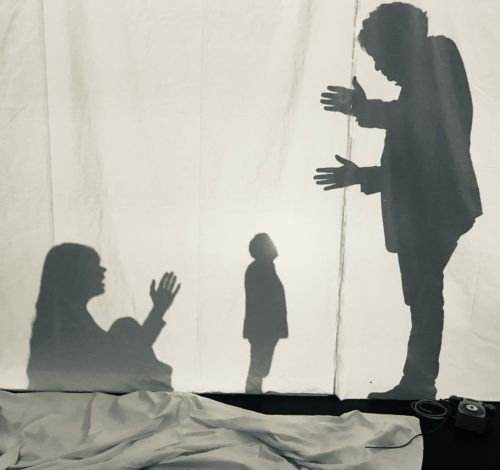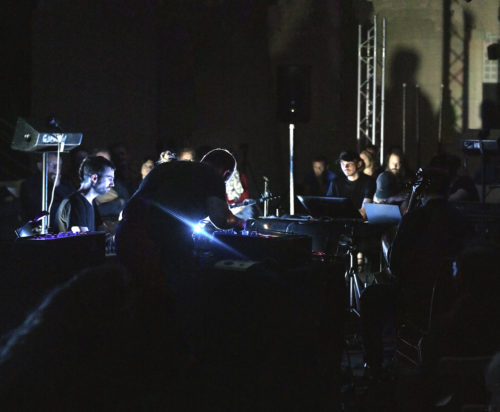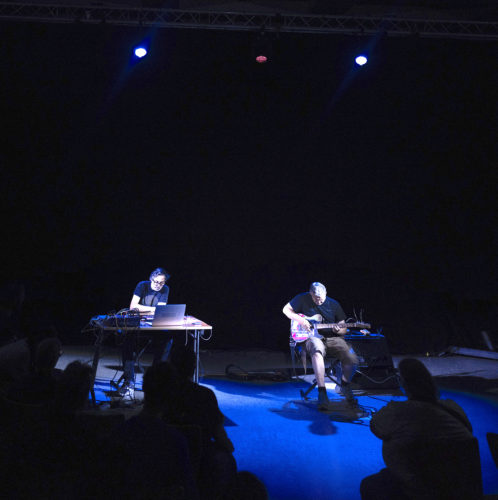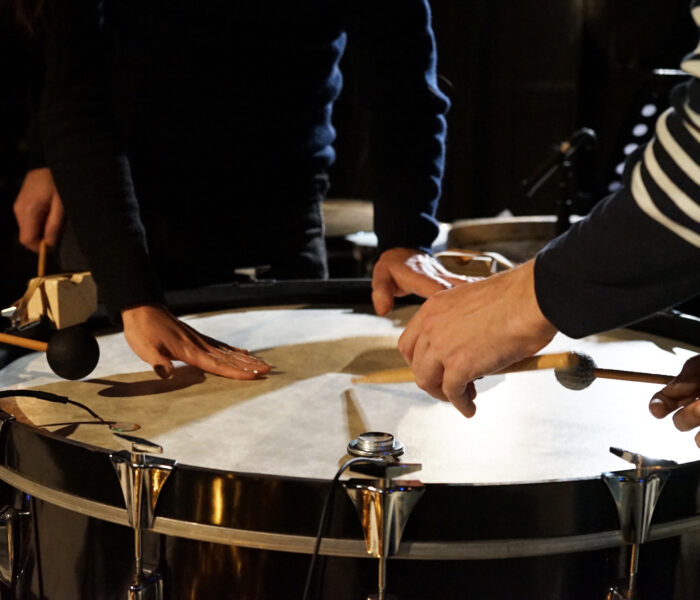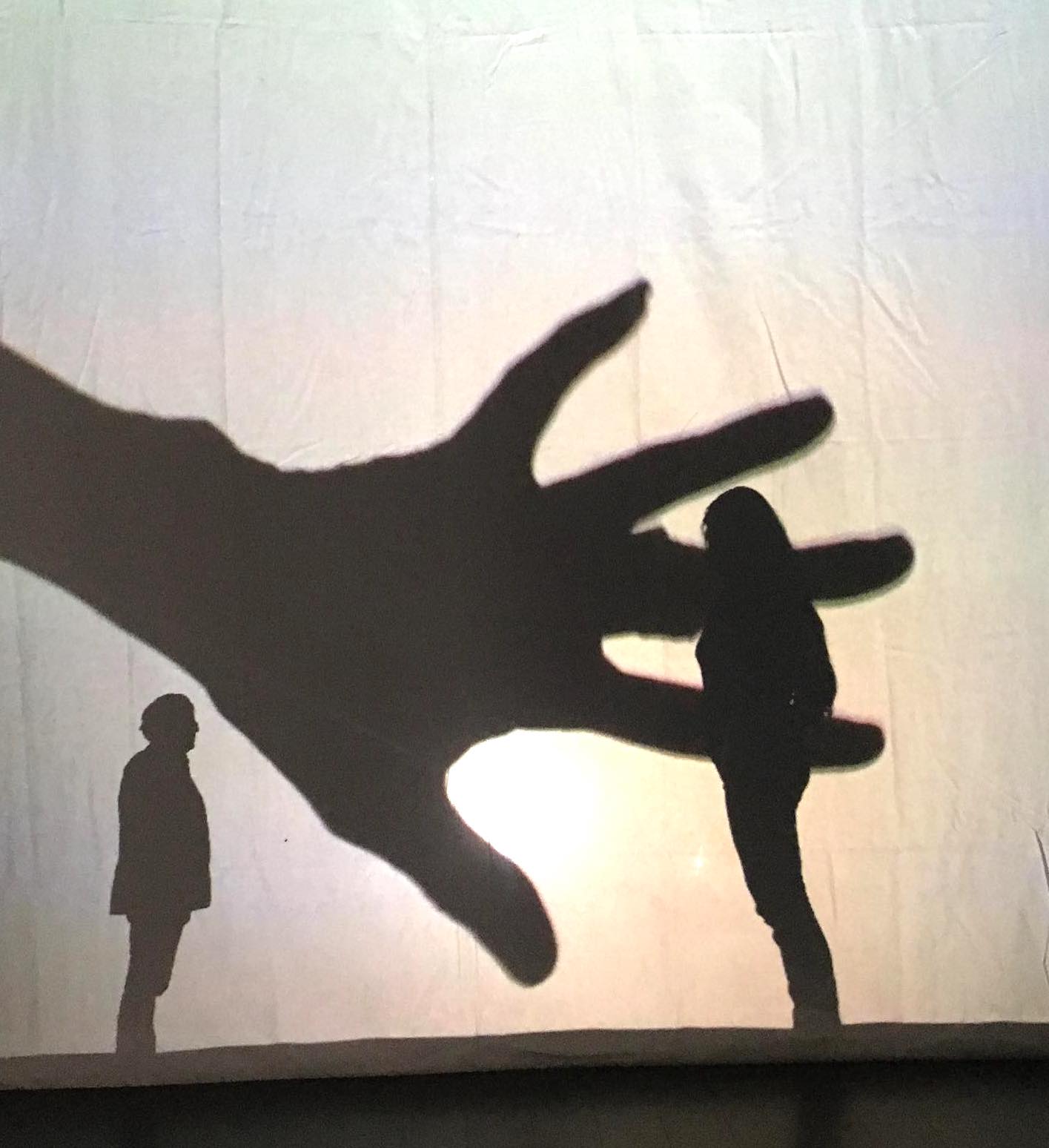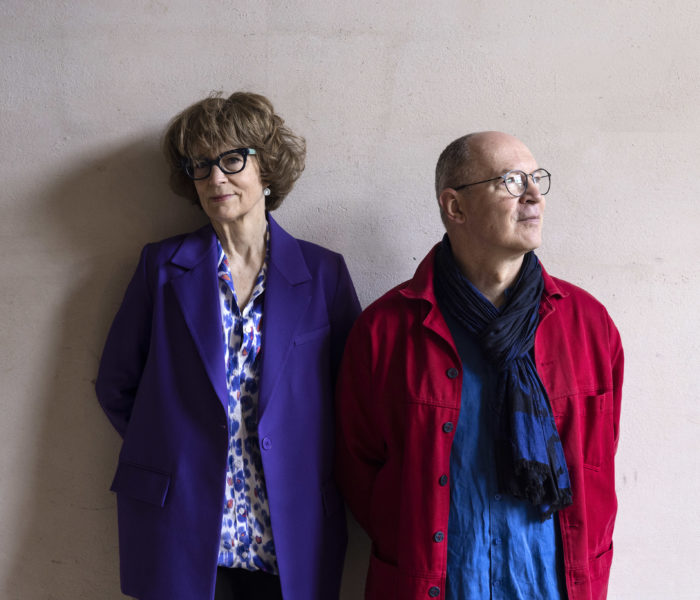After two years of autumnal postponements, Musique Action has returned to spring: the 38th edition of the historic CCAM André Malraux festival, in Vandoeuvre-lès-Nancy, dedicated to sound creation, was held from May 23 to 28.
The festival is back under full sail, with a dense six-day program exploring the uncharted territories of experimental music: installations, new scenography, improvisation, minimalism, traditional instruments, new lutheries and electronics...
The Hémisphère son team, a partner of the festival who took part in the entire event, devotes a dossier to this edition rich in proposals, and to an event in full renewal.
A number of unusual scenographic proposals challenged the traditional frontal approach: David Merlo's PHASE installation, featuring an electric bass throne in the center of the auditorium, continuously generating feedback, which is reworked backstage by an autonomous computer device, possibly accompanied by the artist's live performance; the highly successful Imaginarium show byHélène Breschand and WilfriedWendling, an immersion into the heart of a screen and loudspeaker system, where the arts merge happily and spectators and musicians share the same space, filled with illusions and surprises, like a trance device; Isabelle Duthoit's sung portraits, in which the singer improvises in the intimacy of a dressing room for a single spectator whose face Troubs draws ;Oxke Fixu's MA, which begins in total darkness and plunges the audience into a forest of percussion instruments resonating through the action of transducers picking up the vibrations generated by the instrumentalists, in counterpoint to a play of lights on clay sculptures;Elsa Biston 's highly poetic installation/performance Slow times low freqs , which we follow on cushions, as if we were invited to lie down in the artist's living room for a suave sonic voyage; several concerts in a circular configuration, with the option of reclining on deckchairs, Ursatz by eRikm and Jean-Philippe Gross, Imbroglio by Zarganizokar...
Work on various forms of writing rubbed shoulders with the most improvisational forms.
Thus Hidden Artikulationconceived and composed by Hervé Birolini, examines the graphic score of György Ligeti's electronic work Artikulation (1958) and offers a radically new, phantasmagorical rereading, performed by Archipel nocturne, a colorful multimedia show. As usual, the composer skilfully and poetically poses the questions that drive him: musical heritage, links to music history, contemporary creation, technology, simplicity and complexity, and audience perception. Rereading was also on the agenda with Transformed by double bassist Sarah Murcia and director and performer Fanny de Chaillé, based on Lou Reed's album Transformer , a loving, sarcastic and irreverent appropriation of a recording medium that has become a timeless work of the repertoire.eRikm 's Fata morgana with theDedalus ensemble also offers a rereading, between acoustic and electroacoustic writing, of animal songs and cries normally inaudible to the human ear. For the improvisation section, the festival has invited a number of established names: Guigou Chenevier and Gilles Laval for La Mâchoire et le couteau or Isabelle Duthoit with Steve Heather and Andy Moor for a performance of extraordinary intensity.
Since his arrival, Olivier Perry, director of the Centre Culturel André Malraux (CCAM), has given the festival's programming, and that of the Vandœuvre-lès-Nancy national stage in general, a strong Minimalist musical foundation.
This is reflected in the architecture of the program: from the very first evening, with the atmospheric sound materials of the Nuits group and the conclusion of the concert by the sound quartet led by Erwan Keravec on a transcription of Philip Glass's Music in Similar Motion , beginning with a perfume of traditional music and ending in a spellbinding, irresistible trance; on the evening of the fourth day, with the performance of Julius Eastman's Femenine byEnsemble 0 and Aum Grand Ensemble; during the morning encounters at Nancy's MJC Lillebonne, with double bassist Dario Calderone 's interpretation of Stefano Scodanibbio's Voyage that never ends , or pianist Melaine Dalibert's carte blanche, two moments of grace in which the musicians' virtuosity and extreme concentration completely suspend time, plunging the audience into ecstatic listening; or with the premiere ofOccam XIX (2) for viola da gamba and the revival of Éliane Radigue's Occam River XXVIII by Louis-Michel Marion and Carol Robinson at the byrbine on the closing evening, two totally committed performers.
Other exceptional musicians were also present: multi-instrumentalist Pierre Bastien and his fantastic sound machines; drummer Will Guthrie for a breathtaking performance, sadly without Mark Fell; Yannis Kyriakides in duo with Andy Moor for Pavilion ; and Anthony Laguerre with Jérôme Noetinger, who bring the festival to a close with a more traditional but no less poetic electroacoustic performance on an empty stage, inhabited only by the sounds of Montage, the ghostly noises and voices of the technicians, a vibrant tribute to the invisible part of a festival and of musical life.
"Symbol of renewal", we said in our introduction. Is it really so?
This festival, so rich and intense in its programming, nevertheless raises many questions about its attendance. This year's festival leaves a terrible impression of an "entre-soi", and yet this is what Olivier Perry and Anne-Gaëlle Samson, deputy director of the CCAM, and their team, have been trying to combat with their artistic proposals and mediation actions for the past four years. At the moment, cinemas and theaters are empty, and cultural life is struggling to get back on track under the impact of the health crisis, followed by that of purchasing power. It seems obvious that a niche, research-based sector, a "sound creation festival", could suffer even more from this general disaffection. However, this year, the festival did not go beyond the CCAM walls to take over other spaces, such as the park, the mediatheque in Vandœuvre-lès-Nancy or the Salle Poirel in Nancy. It has not presented mixed shows combining dance and music, or theater and music. Perhaps the radical nature of the programming can also be questioned. All projects have their place in such a festival, especially the most audacious. But an event such as this must also encourage exchanges between universes, showcase the many nuances of experimental music and initiate audiences.
It is essential that this festival be able to renew itself more profoundly if it is to continue to exist and present such projects, so that audiences can continue to debate, enrich and be nourished by the artists' proposals, in their successes as well as their failures. This is the mission of such an event and of a national stage, and these questions can only be a stimulus to keep moving forward in this direction: opening up, inviting the most varied audiences to push open the door to these concerts, encouraging encounters. This is the course we must follow...
Guillaume Kosmicki



)
